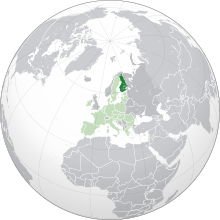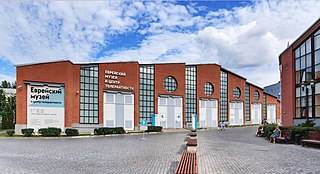
The history of the Jews in Russia and areas historically connected with it goes back at least 1,500 years. Jews in Russia have historically constituted a large religious and ethnic diaspora; the Russian Empire at one time hosted the largest population of Jews in the world. Within these territories, the primarily Ashkenazi Jewish communities of many different areas flourished and developed many of modern Judaism's most distinctive theological and cultural traditions, while also facing periods of antisemitic discriminatory policies and persecution, including violent pogroms. Some have described a "renaissance" in the Jewish community inside Russia since the beginning of the 21st century; however, the Russian Jewish population has experienced precipitous decline since the dissolution of the USSR which continues to this day, although it is still among the largest in Europe.

There have been Jewish communities in the United States since colonial times, with individuals living in various cities before the American Revolution. Early Jewish communities were primarily composed of Sephardi immigrants from Brazil, Amsterdam, or England.
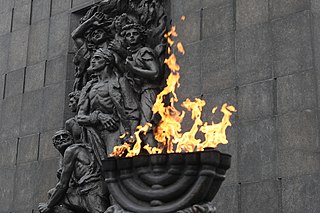
The history of the Jews in Poland dates back at least 1,000 years. For centuries, Poland was home to the largest and most significant Ashkenazi Jewish community in the world. Poland was a principal center of Jewish culture, because of the long period of statutory religious tolerance and social autonomy which ended after the Partitions of Poland in the 18th century. During World War II there was a nearly complete genocidal destruction of the Polish Jewish community by Nazi Germany and its collaborators of various nationalities, during the German occupation of Poland between 1939 and 1945, called the Holocaust. Since the fall of communism in Poland, there has been a renewed interest in Jewish culture, featuring an annual Jewish Culture Festival, new study programs at Polish secondary schools and universities, and the opening of Warsaw's Museum of the History of Polish Jews.

The history of the Jews in Germany goes back at least to the year 321 CE, and continued through the Early Middle Ages and High Middle Ages when Jewish immigrants founded the Ashkenazi Jewish community. The community survived under Charlemagne, but suffered during the Crusades. Accusations of well poisoning during the Black Death (1346–53) led to mass slaughter of German Jews, while others fled in large numbers to Poland. The Jewish communities of the cities of Mainz, Speyer and Worms became the center of Jewish life during medieval times. "This was a golden age as area bishops protected the Jews, resulting in increased trade and prosperity."
The history of Jews in Australia traces the history of Australian Jews from the British settlement of Australia commencing in 1788. Though Europeans had visited Australia before 1788, there is no evidence of any Jewish sailors among the crew. The first Jews known to have come to Australia came as convicts transported to Botany Bay in 1788 aboard the First Fleet that established the first European settlement on the continent, on the site of present-day Sydney.

The history of the Jews in Ukraine dates back over a thousand years; Jewish communities have existed in the modern territory of Ukraine from the time of the Kievan Rus'. Important Jewish religious and cultural movements, from Hasidism to Zionism, arose there. According to the World Jewish Congress, the Jewish community in Ukraine constitutes Europe's third-largest and the world's fifth-largest.

The history of the Jews in Denmark goes back to the 1600s. At present, the Jewish community of Denmark constitutes a small minority of about 6,000 persons within Danish society. The community's population peaked prior to the Holocaust at which time the Danish resistance movement took part in a collective effort to evacuate about 8,000 Jews and their families from Denmark by sea to nearby neutral Sweden, an act which ensured the safety of almost all the Danish Jews.

The history of the Jews in Latvia dates back to the first Jewish colony established in Piltene in 1571. Jews contributed to Latvia's development until the Northern War (1700–1721), which decimated Latvia's population. The Jewish community reestablished itself in the 18th century, mainly through an influx from Prussia, and came to play a principal role in the economic life of Latvia.

The history of Jews in Sweden can be traced from the 17th century, when their presence is verified in the baptism records of the Stockholm Cathedral. Several Jewish families were baptised into the Lutheran Church, a requirement for permission to settle in Sweden. In 1681, for example, 28 members of the families of Israel Mandel and Moses Jacob were baptised in the Stockholm German Church in the presence of King Charles XI of Sweden, the dowager queen Hedvig Eleonora of Holstein-Gottorp, and several other high state officials.

The history of the Jews in Argentina goes back to the early sixteenth century, following the Jewish expulsion from Spain. Sephardi Jews fleeing persecution immigrated with explorers and colonists to settle in what is now Argentina, in spite of being forbidden from travelling to the American colonies. In addition, many of the Portuguese traders in the Viceroyalty of the Río de la Plata were Jewish. An organized Jewish community, however, did not develop until after Argentina gained independence from Spain in 1816. By mid-century, Jews from France and other parts of Western Europe, fleeing the social and economic disruptions of revolutions, began to settle in Argentina.
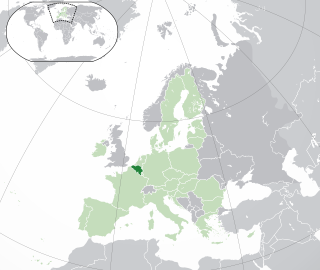
The history of the Jews in Belgium goes back to the 1st century CE until today. The Jewish community numbered 66,000 on the eve of the Second World War but after the war and The Holocaust, now is less than half that number.
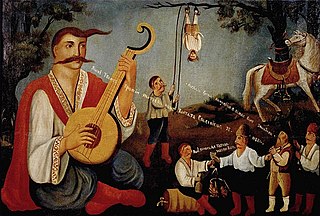
Antisemitism in Ukraine has been a historical issue in the country, particularly in the twentieth century. The history of the Jewish community of the region dates back to the era when ancient Greek colonies existed in it. A third of the Jews of Europe previously lived in Ukraine between 1791 and 1917, within the Pale of Settlement. The large concentration of Jews in this region historically made them an easy target for anti-Jewish actions and pogroms.
Antisemitism —prejudice, hatred of, or discrimination against Jews—has experienced a long history of expression since the days of ancient civilizations, with most of it having originated in the Christian and pre-Christian civilizations of Europe.
The history of the Jews in Vienna, Austria, goes back over eight hundred years. There is evidence of a Jewish presence in Vienna from the 12th century onwards.
The February Revolution in Russia officially ended a centuries-old regime of antisemitism in the Russian Empire, legally abolishing the Pale of Settlement. However, the previous legacy of antisemitism was continued and furthered by the Soviet state, especially under Joseph Stalin. After 1948, antisemitism reached new heights in the Soviet Union, especially during the anti-cosmopolitan campaign, in which numerous Yiddish-writing poets, writers, painters and sculptors were arrested or killed. This campaign culminated in the so-called Doctors' plot, in which a group of doctors were subjected to a show trial for supposedly having plotted to assassinate Stalin. Although repression eased after Stalin's death, persecution of Jews would continue until the late 1980s.

The history of the Jews in Japan is well documented in modern times, with various traditions relating to much earlier eras.
British Jews have experienced antisemitism - discrimination and persecution as Jews - since a Jewish community was first established in England in 1070. They experienced a series of massacres in the Medieval period, which culminated in their expulsion from England in 1290.
Evidence for the presence of Jewish communities in the geographical area today covered by Austria can be traced back to the 12th century. In 1848 Jews were granted civil rights and the right to establish an autonomous religious community, but full citizenship rights were given only in 1867. In an atmosphere of economic, religious and social freedom, the Jewish population grew from 6,000 in 1860 to almost 185,000 in 1938. In March 1938, Austria was annexed by Nazi Germany and thousands of Austrians and Austrian Jews who opposed Nazi rule were sent to concentration camps. Of the 65,000 Viennese Jews deported to concentration camps, only about 2,000 survived, while around 800 survived World War II in hiding.

Comparisons between Israel and Nazi Germany occur frequently in some veins of anti-Zionism in relation to the Israeli–Palestinian conflict. The legitimacy of these comparisons and their potential antisemitic nature is a matter of debate. Historically, figures like historian Arnold J. Toynbee have drawn parallels between Zionism and Nazism, a stance he maintained despite criticism. Scholar David Feldman suggests these comparisons are often rhetorical tools without specific antisemitic intent. The Anti-Defamation League (ADL) sees them as diminishing the Holocaust's significance.

This article presents the timeline of selected events concerning the history of the Jews in Lithuania and Belarus from the fourteenth century when the region was ruled by the Grand Duchy of Lithuania.
